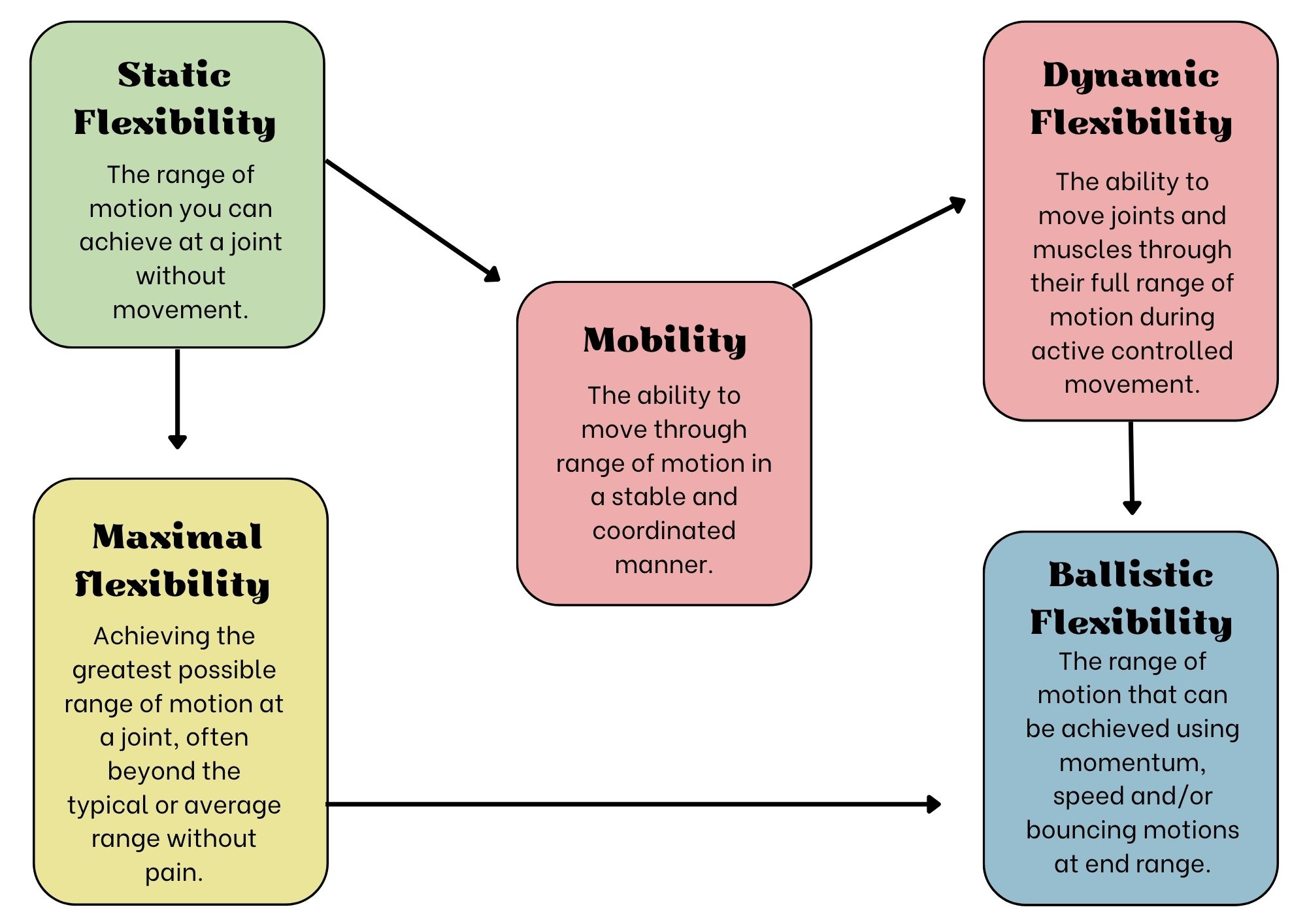Types of Flexibility
Why Flexibility Matters
Flexibility is often misunderstood as simply being able to stretch further or perform impressive poses. In reality, it is a fundamental component of healthy movement that influences everything from reaching and bending in daily life to more complex or explosive movements in sport.
What Exactly is Flexibility?
Flexibility is typically defined as the range of motion (ROM) available at a joint or group of joints. (1) Increasing or utilising this range requires a degree of extensibility in the muscles and connective tissues. (2) These tissues must be capable of lengthening in response to an applied force or torque.
Developing adequate flexibility not only supports more efficient movement, but also plays a role in injury prevention. There is moderate evidence that static stretching can reduce the incidence of musculotendinous and ligamentous injuries, particularly during powerful actions such as sprinting or rapid changes of direction. (2)
Whether your goal is to improve performance, maintain mobility, or minimise injury risk, understanding flexibility is the first step towards training with purpose.
Flexibility Is Not Just One Thing!
Flexibility is often spoken about as if it’s one single quality. In practice, it includes several related but distinct types. Each contributes differently to how your body moves, and understanding these differences is key to designing targeted and effective training strategies.

Let’s take a closer look at each of the types of flexibility with some practical examples:
Static Flexibility
The range of motion you can achieve at a joint without movement. An example might be holding a hamstring stretch while lying on your back. This reflects passive extensibility of the muscles and soft tissue when the body is at rest.
Maximal Flexibility
Achieving the greatest possible range of motion at a joint, often beyond the typical or average range, without pain. This is commonly seen in gymnasts, dancers, and other athletes who require extreme ranges for performance.
Mobility
The ability to move through range of motion in a stable and coordinated manner. Mobility integrates flexibility, strength, and motor control. A deep, controlled squat or overhead reach without compensation are good examples of mobility in action.
Dynamic Flexibility
The ability to move joints and muscles through their full range during active, controlled movement. This is important in many athletic and daily tasks, such as leg swings, arm circles, or walking lunges.
Ballistic Flexibility
The range of motion that can be achieved using momentum, speed, or bouncing movements at end range. Ballistic stretching is used in some high-performance settings but carries a greater risk of injury if applied without adequate preparation.
While each type of flexibility serves a specific purpose, they don’t exist in isolation. Just like your joints and muscles work together to create movement, the different flexibility types are interrelated and often overlap in training and application.
Flexibility Training Types
Developing flexibility may include improvements in passive flexibility, mobility, dynamic flexibility, maximal flexibility and/or ballistic flexibility depending on the programming approach used. So what methods can be used to develop these sub-disciplines of flexibility? The infographic below describes some commonly effective approaches to develop these capacities.

Hopefully this may have clarified your understand of flexibility, the sub-components of flexibility and how to develop them using different training approaches. During our initial consultations at Limber we help you to establish your flexibility goals and provide advice about which flexibility techniques to use, and when and how to use them. If you would like help developing your own personalised flexibility program, contact us – we would love to hear about your goals!
References
- Alter MJ. Science of flexibility. Human Kinetics; 2004
- Behm D. The Science and Physiology of Flexibility and Stretching : Implications and Applications in Sport Performance and Health. Taylor & Francis Group; 2024
